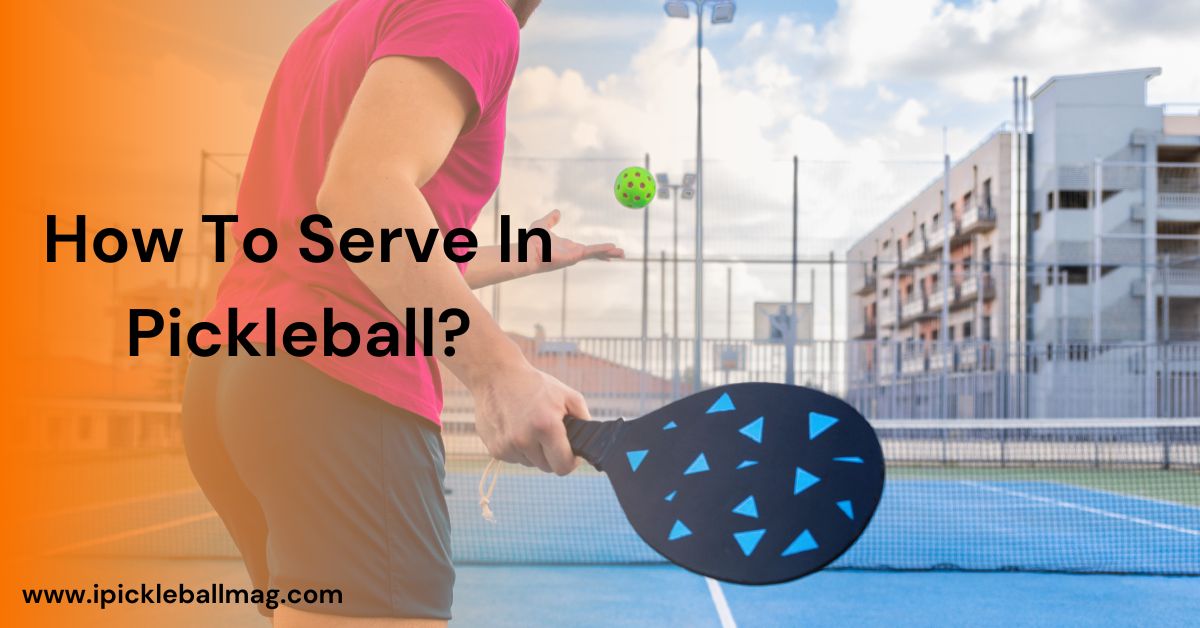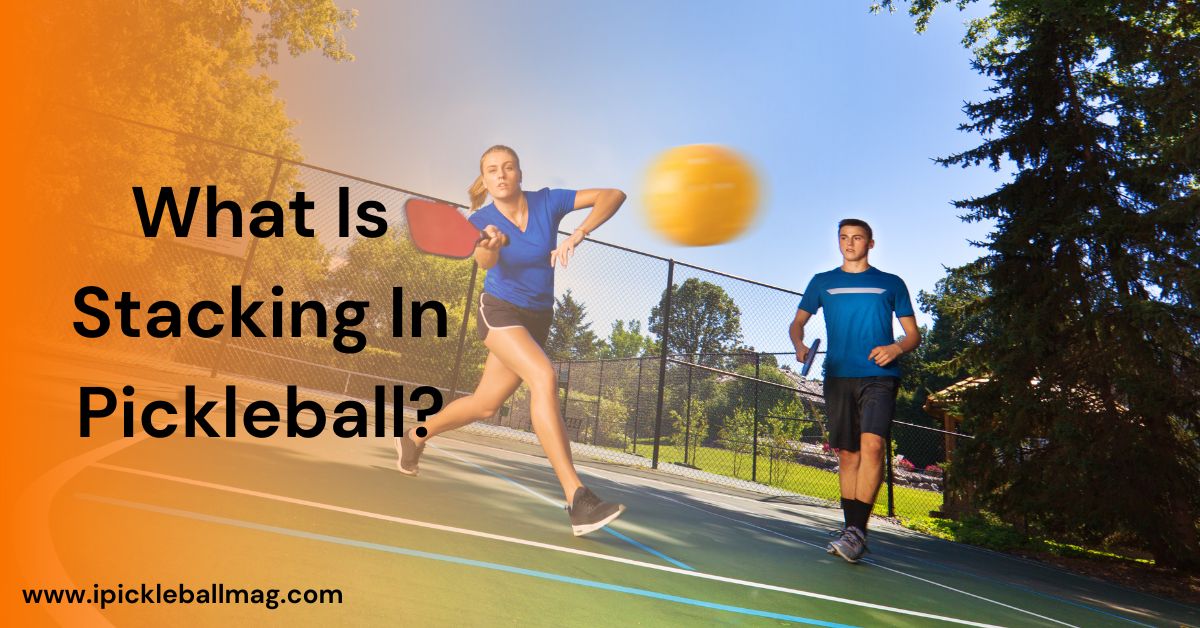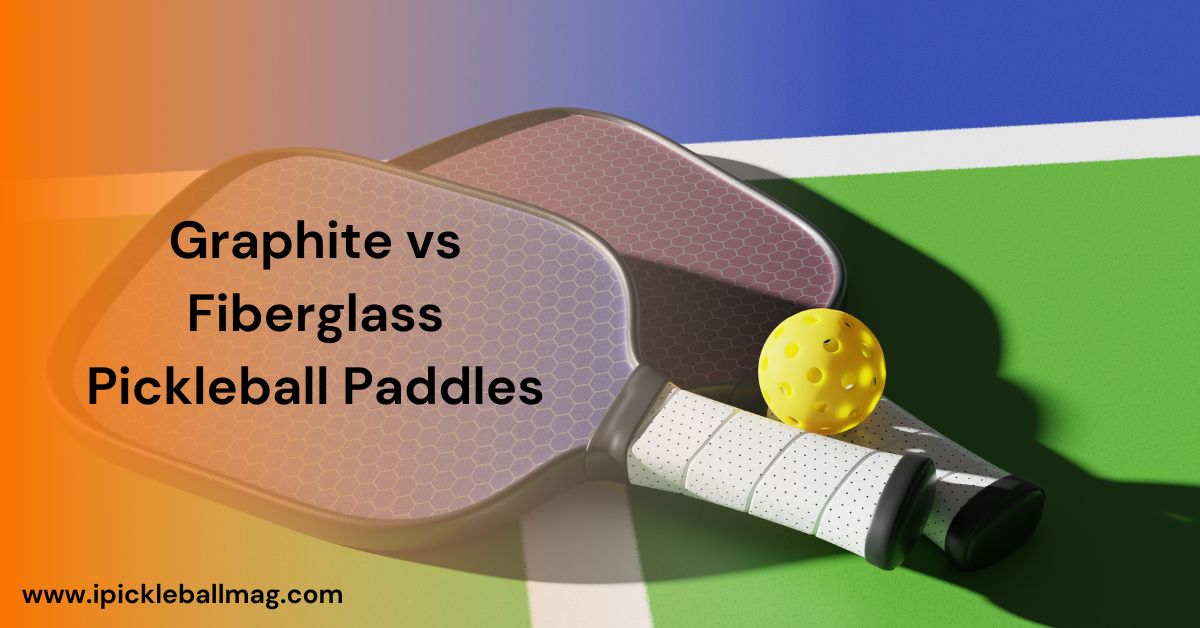How to Build an Outdoor Pickleball Court?
Building an outdoor pickleball court involves several key steps. The first step is to choose a location with at least 30×60 feet of flat ground. Afterward, clear and level the ground and install proper drainage (if needed). This is essential for the overall construction of the court.
Next, choose your surface materials. It can be asphalt, concrete, or sports tiles, each offering unique advantages for pickleball court surfaces. Once the surface is prepared, paint the court lines according to standard dimensions: 20×44 feet for the playing area, which includes the non-volley zone.
Then, install a net system that meets regulation height (34 inches at the center, 36 inches at the posts). For permanent setups, consider permanent net posts installed with the court for stability.
After the court is designed, surround your court with pickleball fencing, ideally 10-12 feet high, to keep the ball in. This is particularly important if you plan to construct multiple courts or a multi-court complex.
If you have a good budget and want to go all in, you can install LED lights for evening play, which is a common addition in recreation centers. Only building a court is not enough; regular maintenance is also important, like ensuring the surface is clean or inspecting your court for cracks.
That’s all for this short guide. If you need a step-by-step detailed guide on how to build an outdoor pickleball court, stay with us till the end.
In case you are concerned about the cost of an outdoor pickleball court, we have an article that can help.
Since I recently Covered playing pickleball in rain it’s time to cover how to build an outdoor pickleball court.
How to Build an Outdoor Pickleball Court – Step-By-Step Guide
Building your outdoor pickleball court does not need to be a daunting project if you follow some simple steps.
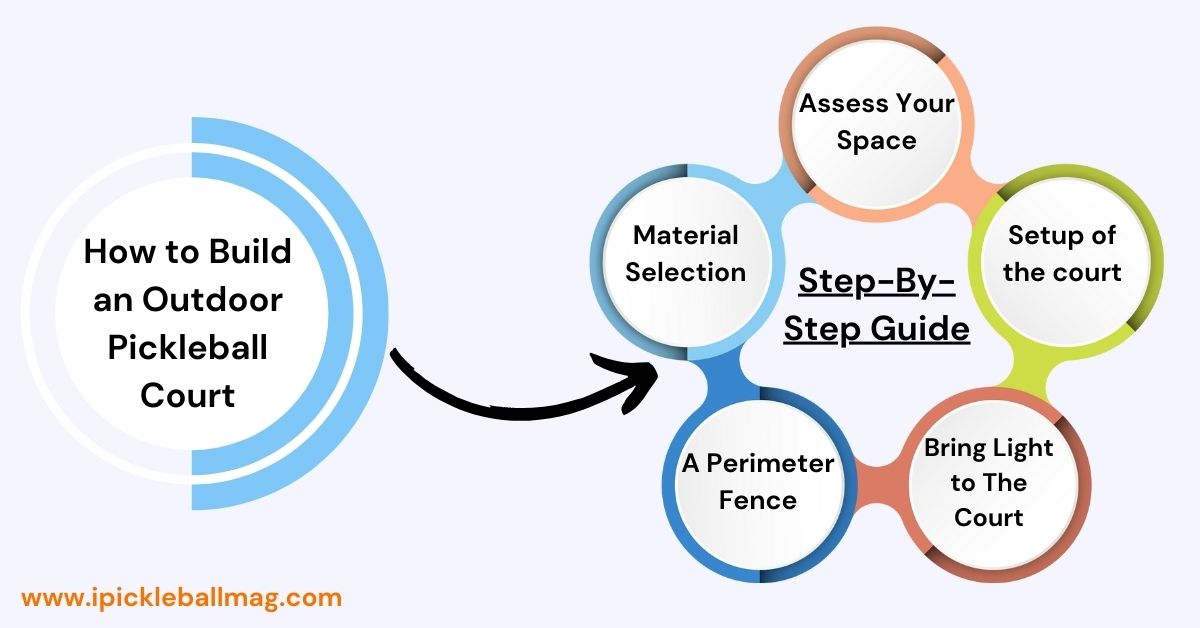
Carefully planning the space and surface material is important. Then, accurately measuring and marking the court boundaries ensures optimal play space. For example, if you’re constructing a new pickleball court, ensure the dimensions adhere to official standards.
Installing a fence around the perimeter allows safe retrieval of balls. And considering lighting lets play extend into evening hours.
Below, you will find a detailed step-by-step explanation of how to proceed.
Identify Your Space
You’ll need to ensure enough space to build your outdoor pickleball court. The regulation size for the playing area is 20 feet by 44 feet. For multiple courts, plan accordingly to accommodate additional space.
Additionally, leaving room around the court is important so players stay within bounds when chasing shots. Having 10 extra feet surrounding the court is ideal.
Remember that you want the court running north to south for optimal sun positioning when figuring dimensions. This limits daylight directly hitting players’ eyes. If tall trees surround your yard, choosing the direction is not a problem.
Some areas require permits to build sports facilities In their backyard so make sure to check this also
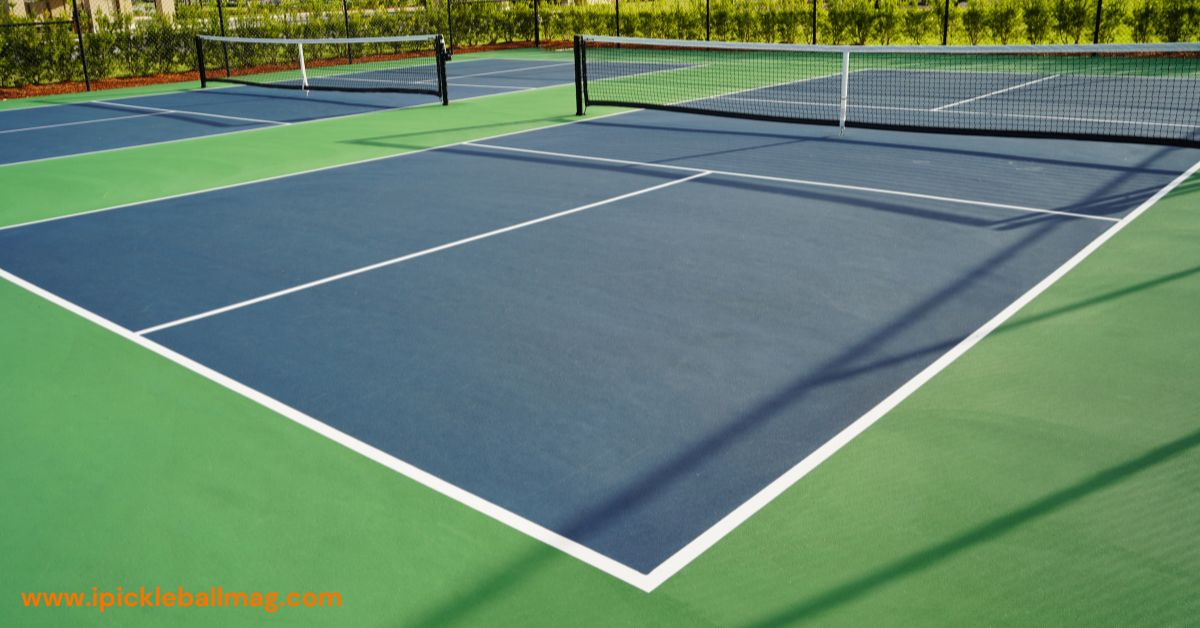
Choose Surface Material
Selecting the correct surface material is key after determining the space where you want to build your court. You must choose between concrete, asphalt, or plastic tiles. Each of these pickleball court surfaces has its pros and cons.
Concrete provides excellent durability and value over time. After laying and grading for drainage, all that’s left is to paint the lines. However, concrete requires a large initial investment and often benefits from an acrylic adhesion promoter for better performance.
Asphalt costs less than concrete initially. If the land is suitable, simply pouring asphalt over a concrete base works well. The smoothness of the surface requires more maintenance over time.
Plastic snap-together tiles can be installed over existing asphalt or concrete surfaces, preserving what’s already there. These can be ideal if you want a low-maintenance option.
Consider what matters most to your budget and needs when deciding between concrete, asphalt, or plastic tiles. Court surfaces should be chosen carefully to ensure durability and playability.
(If you are on a budget and looking for affordable paddles, check out our article on the best paddles for $100.)
Setting Up The Court
Once space and surface material are finalized, you should set up the court. First, you must establish a starting point for one of the sidelines. From there, measure out 44 feet and mark both ends with sidewalk chalk or orange masking tape.
Next, extend your measuring tape at a 90-degree angle from the end of the sideline for slightly over 20 feet. Mark this spot to set the first corner.
Then, lay out the baseline by positioning your measuring tapes to intersect at 20 feet from the sideline and 48 feet 4 inches from the starting corner mark. Use green tape to mark the boundaries temporarily.
Connect these points to draw your baseline. Repeat these measurements on the opposite side to finish the square shape.
Verify the squareness after creating the outer boundaries. Once satisfied with the layout, draw the lines across the surface, ensuring they are line parallel to the court’s length.
At last, put up your pickleball net in the center. Place the posts, each 21 feet from the baselines, and make sure the height is 36 inches at the posts and 34 inches in the middle. Consider using permanent net posts installed with the court for a stable setup.
Portable net systems can also be used for flexibility. Then, your outdoor pickleball court will be ready for play.
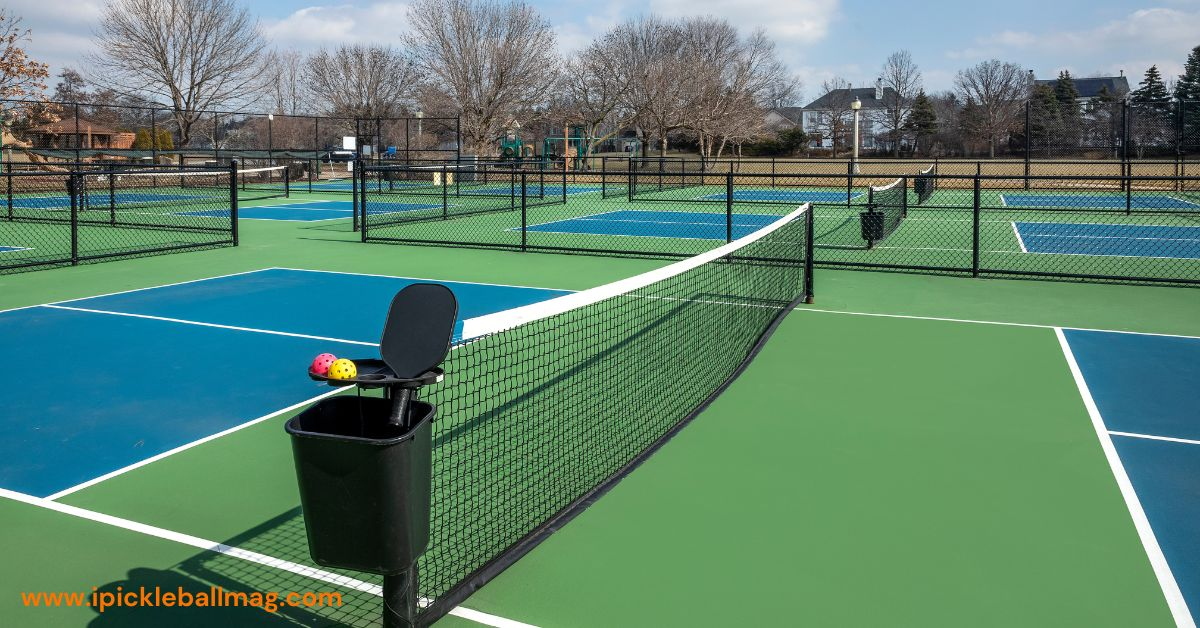
Setting Perimeter Fencing
Once you have set up the court, your next priority should be perimeter fencing. Keeping balls secure is essential for safety and convenience.
Consider fencing that is around shoulder height for adults. This will fully enclose the playing space without obstructing views.
Wire meshes are popular since they allow good visibility yet keep things in place. Ensure wire edges are sealed or capped to protect from scratches or cuts. For additional safety, consider cushioning the top part players may bump into.
As for arranging the fencing, copy the exact dimensions of your court surface so there are no gaps where balls can escape. Hire a contractor if you need help with proper installation techniques.
With the fence intact, you and your fellow players can enjoy carefree games without searching the whole yard after each point.
Equip Your Court with Light
When planning to play in the evenings, as many players do, consider adding some good-quality spotlights. It is best to install them several feet behind the court on poles that stand 18 feet high.
While light poles aren’t completely necessary, they can be useful. Lights make playing pickleball at night possible. If playing at night is important to you, you’ll want to include light poles as part of the construction.
Standard procedure for courts involves employing a pair of 1,500-watt light poles. Each vertical support should tower 18 to 20 feet, be center-mounted, and be positioned 24 inches behind the playing surface.
Benefits of Having Your Own Backyard Pickleball Court
There are many perks of having a personal Backyard Pickleball court. Below we have discussed some of them:
Convenient Access to Physical Activity
Having a pickleball court in your backyard provides easy and convenient access to regular physical activity. This eliminates the need for a gym membership or travel to public courts, allowing you to engage in a fun and beneficial exercise routine whenever you choose.

Frequent play on your own court can significantly improve cardiovascular health, enhance coordination, and boost overall agility. This ease of access encourages a more active lifestyle, helping to maintain fitness and well-being.
Enhanced Social Interactions
A backyard pickleball court becomes a central hub for social interactions, fostering stronger relationships with family and friends. It provides a fun and engaging way to spend time together, whether through casual games or friendly competitions.
Hosting games at home can bring people together, creating memorable experiences and strengthening bonds. The court offers a versatile space for social gatherings, from family reunions to neighborhood tournaments, enhancing your social life.
No Waiting Time
One of the most significant advantages of having a backyard pickleball court is the elimination of waiting time. Unlike public courts, where you might have to wait for your turn, a private court means you can play whenever you want without delay.
This immediate access not only saves time but also enhances your overall enjoyment and convenience, making it easier to incorporate regular play into your schedule.
Health and Wellness Benefits
Regular play on your backyard pickleball court contributes significantly to health and wellness. The sport is known for its low-impact nature, making it suitable for all ages and fitness levels. It helps reduce stress, improve mental health, and increase overall happiness through enjoyable physical activity.
By having a court readily available, you can easily integrate these health benefits into your daily routine, promoting a balanced and healthy lifestyle.

Frequently Asked Questions
What Can You Make A Pickleball Court Out Of?
Concrete and asphalt are the most used surface materials for pickleball courts. Concrete provides excellent durability and value over time. However, concrete requires a large initial investment and often uses an acrylic resurfacer for better longevity.
Asphalt costs less than concrete initially, but for the smoothness of the surface, it requires more maintenance over time.
Difference Between A Tennis Court And A Pickleball Court
A pickleball court is smaller than a tennis court, measuring 20×44 feet compared to a tennis court’s 27×78 feet. Pickleball courts have different line markings and use a lower net height (36 inches at the posts) compared to tennis (42 inches).
How Much Space Is Needed Around A Pickleball Court?
To build an outdoor pickleball court, you’ll need enough space. A 20 by 44 foot playing area is the regulation size.
Leaving room around the court is important so players stay within bounds when chasing shots. Having 10 extra feet surrounding the court is ideal.
Summary
Building your outdoor pickleball court provides many enjoyable opportunities for playing this popular game with family and friends. Whether you want a single court in your own yard or a multi-court complex, careful planning is key.
With careful space planning, suitable surface material, accurate court markings, and installation of safety fencing and optional lighting, you can create a regulation-sized pickleball court right in your backyard. This can be a standalone

